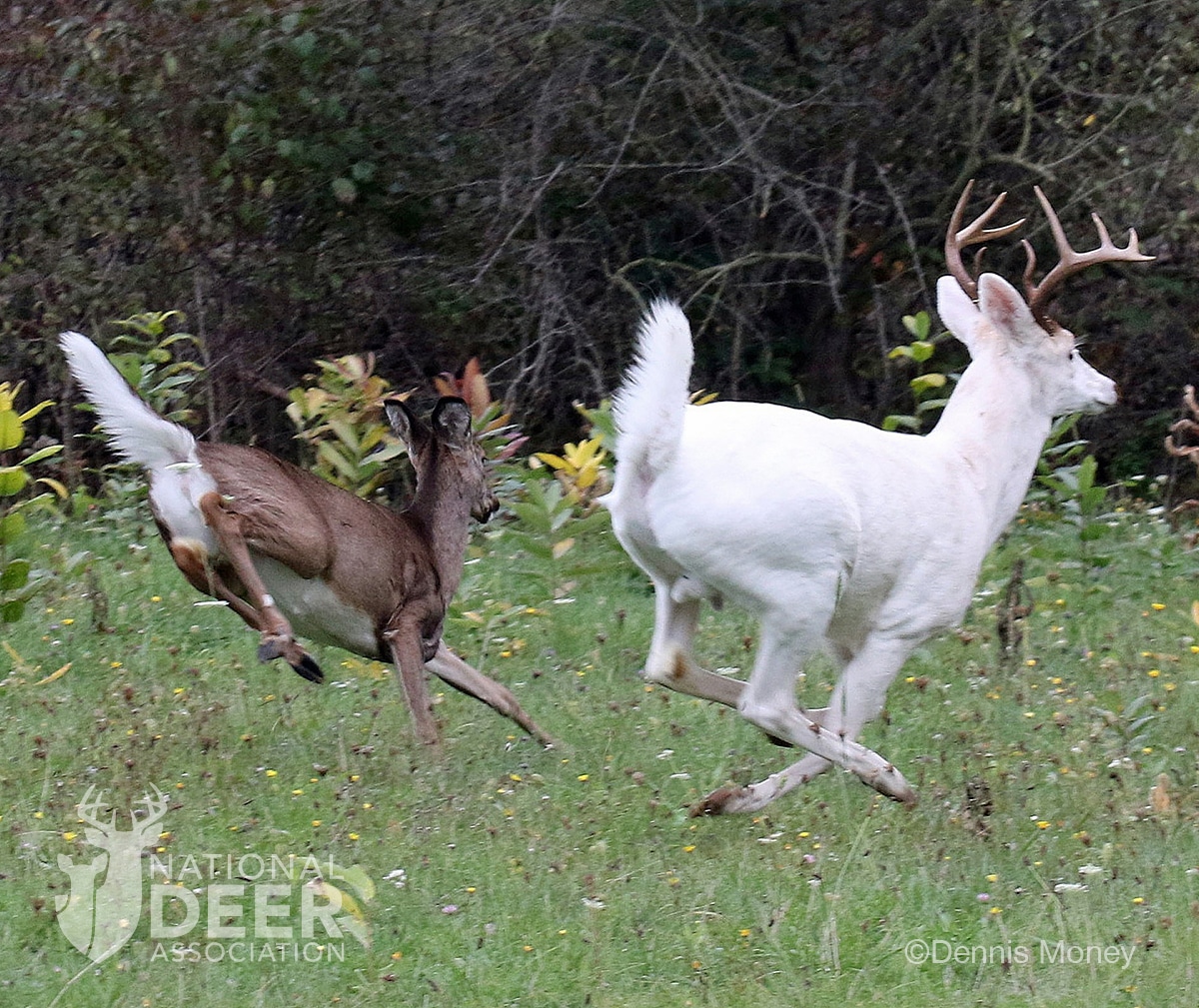
Deer come in a wide variety of colors. Though most are brown or gray, you also see shades or red, coats of silver, and there are several rare color phases that include white and even black. They change color from summer to winter as their reddish summer coat is replaced by a gray winter coat. And many deer display other unique markings or color variations based on where they live. Besides the standard, familiar color, there are four major coloration categories of deer: albino, leucistic, piebald and melanistic. Let’s look at how to identify each, and how they are different, so you’ll be able to identify these rare forms should you be lucky enough to see one.
Albino Deer
- All white hair
- Pink eyes
- Pink nose
- Pink/white hooves
- Pink inside the ears
- Antler velvet is white/pink
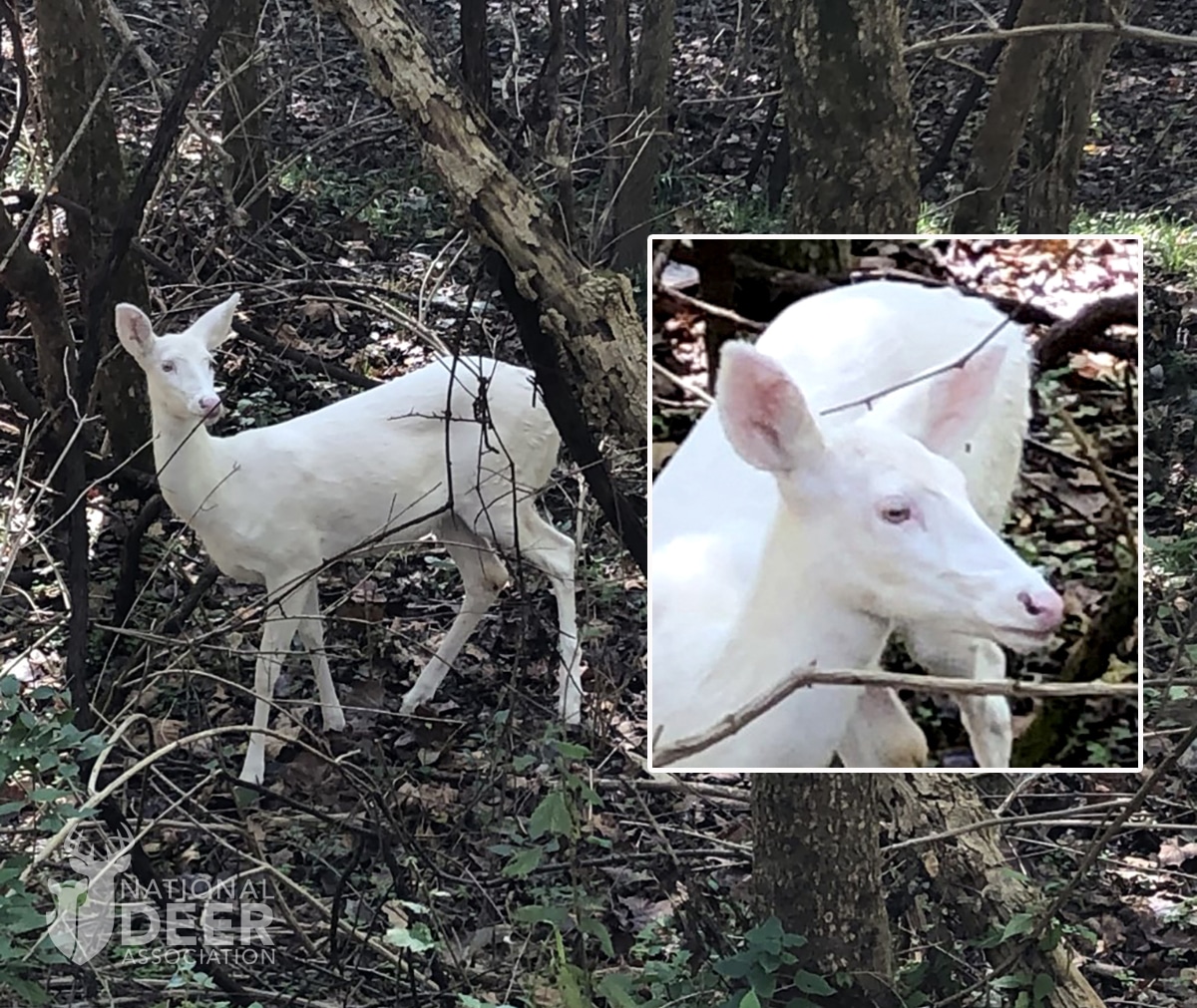
Albino deer do not have the gene that is responsible for normal coloration of skin, hair, and tissue. This is caused by the complete lack of melanin pigmentation and is due to a recessive trait inherited from both parents. A deer can carry this rare recessive trait without being albino, but when two deer carrying the trait reproduce, there’s a chance their offspring will be albino.
Other color pigments can be present, which can oftentimes lead to a yellowish tint in albino deer, but the majority of the time their fur is all white. Albinism in deer is rare with some estimates showing the trait in only one in every 30,000 deer.
Leucistic or White Deer
- All white hair
- Dark-colored eyes
- Generally have dark-colored noses
- Dark-colored hooves
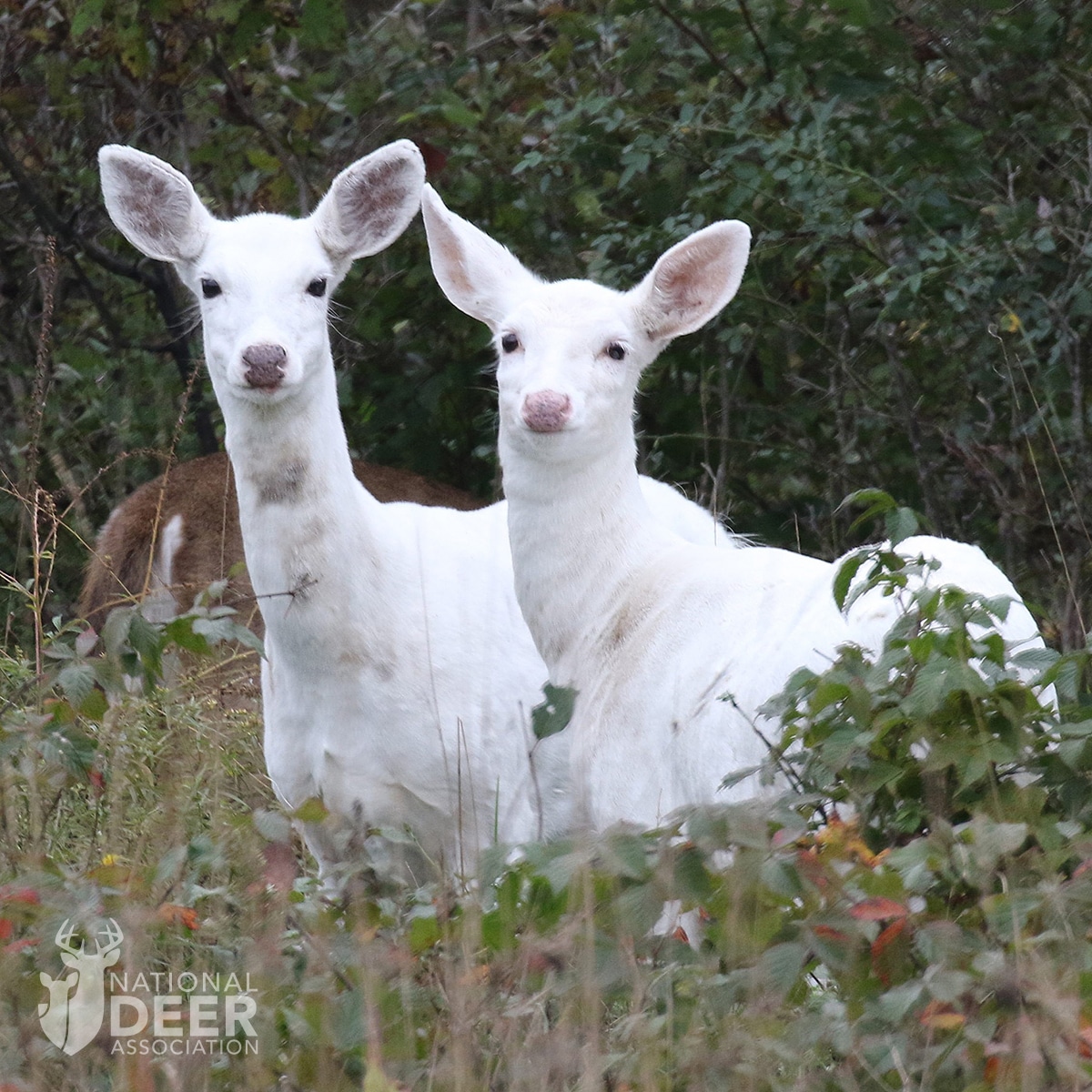
Leucism is caused by a wide variety of conditions that result in the partial loss of pigmentation in hair and skin, but not the eyes. Leucism is different than albinism, so not all “white deer” are albino. Full leucism is extremely rare with estimates stating it is found in less than 1% of the deer population.
The most famous example of leucism in deer is the Seneca white deer herd near Seneca Falls, New York. Due to the protection of these white deer in an enclosed, fenced area of a former Army depot, the trait became more common than it is in free-roaming populations. The Seneca herd is believed to have the world’s highest rate of leucism in deer and possibly of any animal species. The buck at the top of this page is a Seneca white deer, photographed by Dennis Money.
Piebald Deer
- A pattern of unpigmented spots (white) on a pigmented background of hair
- The deer’s skin under the white background is not pigmented
- Mostly black eyes, noses, and hooves (rare cases with pink extremities)
- Unique coloration for each animal, like a fingerprint
- Often have physical defects like skeletal deformities or shortened legs.

Piebaldism is actually a form of leucism. Piebald deer have a genetic mutation that causes patches of white hair, so it is partial leucism. Piebald deer are not as rare as albino or leucistic deer. Estimates show piebalds can be as common as one in every 1,000 deer. In some localized regions or islands, they may be more common.
Each piebald deer has its own unique coloration, like a fingerprint, which makes no two piebalds exactly alike. In that sense, piebald colorations could be considered the “rarest” since every individual’s pattern is different.
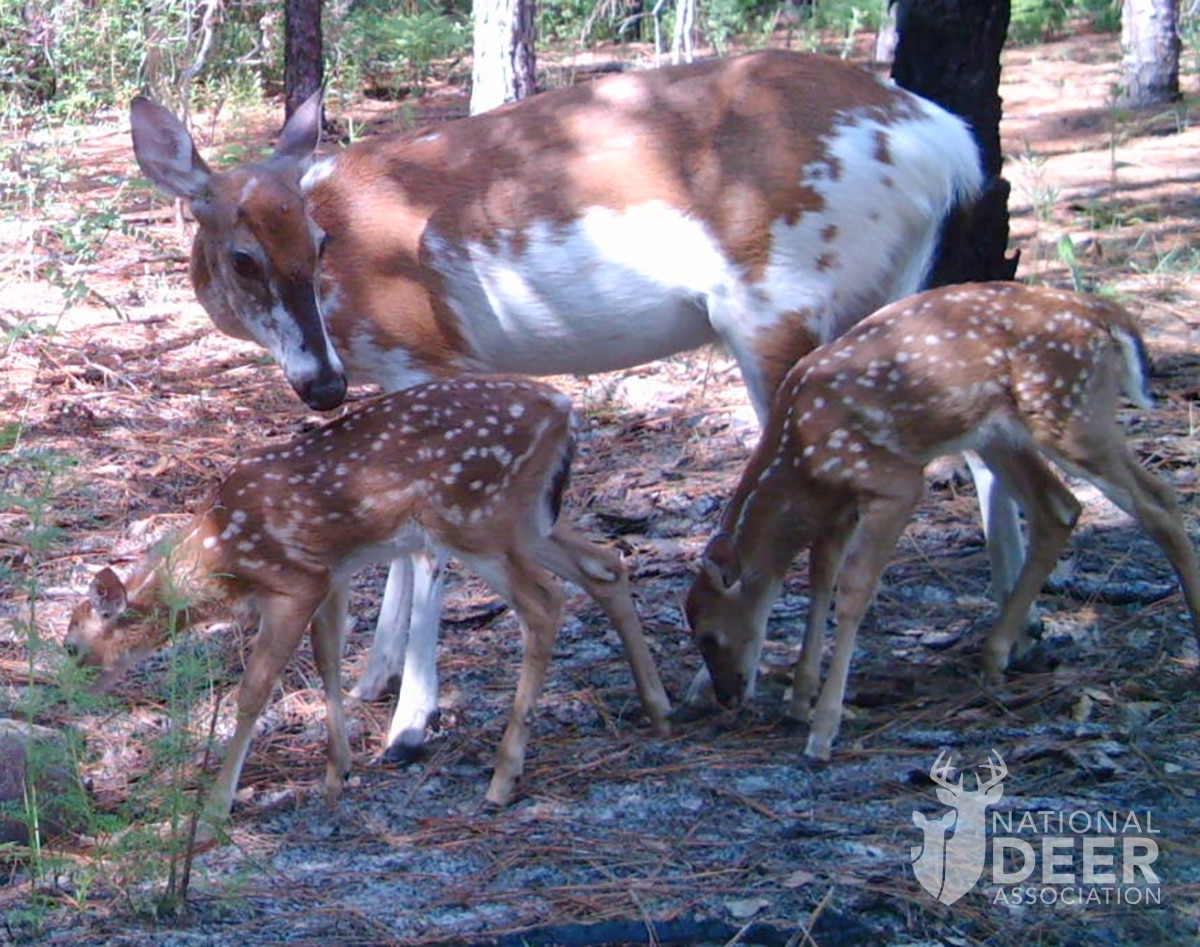
Piebaldism is recessive trait, so both parents must carry the trait for their offspring to have a chance of displaying it. It is possible for piebald does to give birth to normal fawns (see the photo above), and normal does may give birth to sets that include both piebald and normal fawns.
Melanistic or Black Deer
- All dark or black hair
- Black eyes
- Black nose
- Black antler velvet
- Black hooves
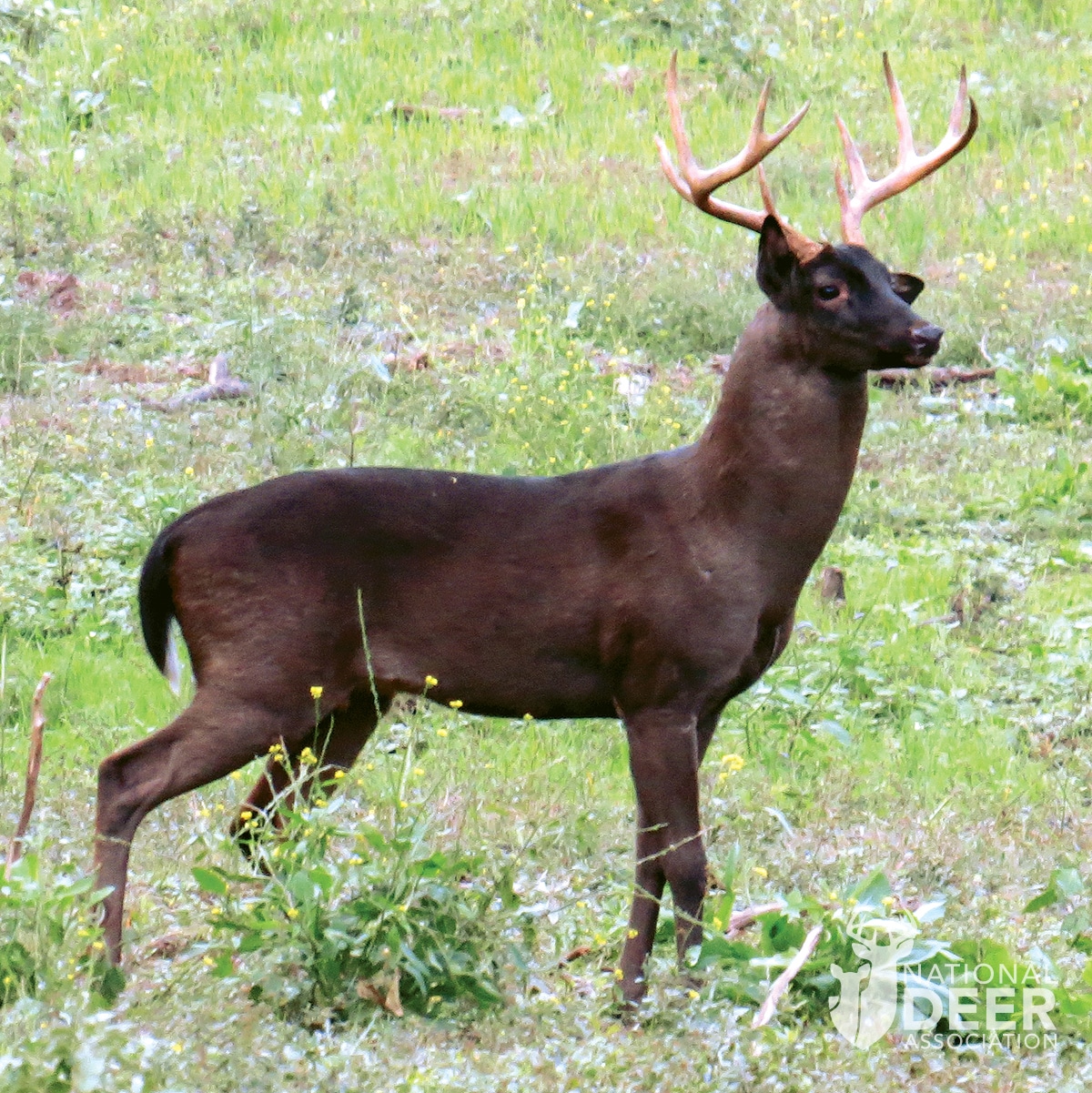
Melanism is caused by the overproduction of the pigment melanin, more specifically a mutation of the melanocortin 1 receptor gene (MC1R), which gives the animal a dark or black appearance. Melanism is actually believed to be the rarest of all the genetic mutation color variations with some estimates being as low as one in every 500,000 deer. Only a few states – including Mississippi, Michigan, Virginia, Pennsylvania, Texas, and South Carolina – have reported melanistic deer sightings, so one in 500,000 might be a high estimate for the entire whitetail range.
Oddly, an area in central Texas holds a notably high rate of melanistic whitetails. A Texas Tech University study reported 8.5% melanism among whitetails in eight central Texas counties on the eastern edge of the Edwards Plateau. Hunters in this region see a much higher incidence of melanistic deer than any other region.
Summer vs. Winter Coat

Whitetails also have color variations based on the time of the year. Whitetail deer start growing their thin summer coat in spring. These thin coats allow for maximum heat loss. They have a red appearance throughout summer until they shed their thin coat in August and September.
Winter coats replace the short reddish hair with longer brownish-grey hair. Winter coats have important thermoregulatory qualities and allow deer to survive northern winters. Winter coats can be five to six times deeper than summer coats! Hair depth is critical for survival because deeper coats trap more insulating air. A whitetail’s winter coat also contains long guard hairs and short underfur, and the hairs have hollow shafts that trap air. This combination insulates deer so well that snow can remain on a deer’s back without melting!
Other Unique Deer Colorations
Deer have been observed with a wide variety of other unique colorations on their coats. From the very beginning with their first coats, whitetail fawns have a reddish-brown color with approximately 300 white spots covering their bodies. Whitetails can have other colorations that complement their primary colors with white on their belly, legs, ears, feet, throat, chin, around their eyes and nose, rump, and on the edges and underside of their tail. Sometimes there can be random different colored spots on their coat, white stripes that extend high on their legs, all white feet, large white eye rings, black brow stripes, or the coveted double white throat patch. So far, there is very little to no scientific data that tells us why deer have some of these unique colorations.
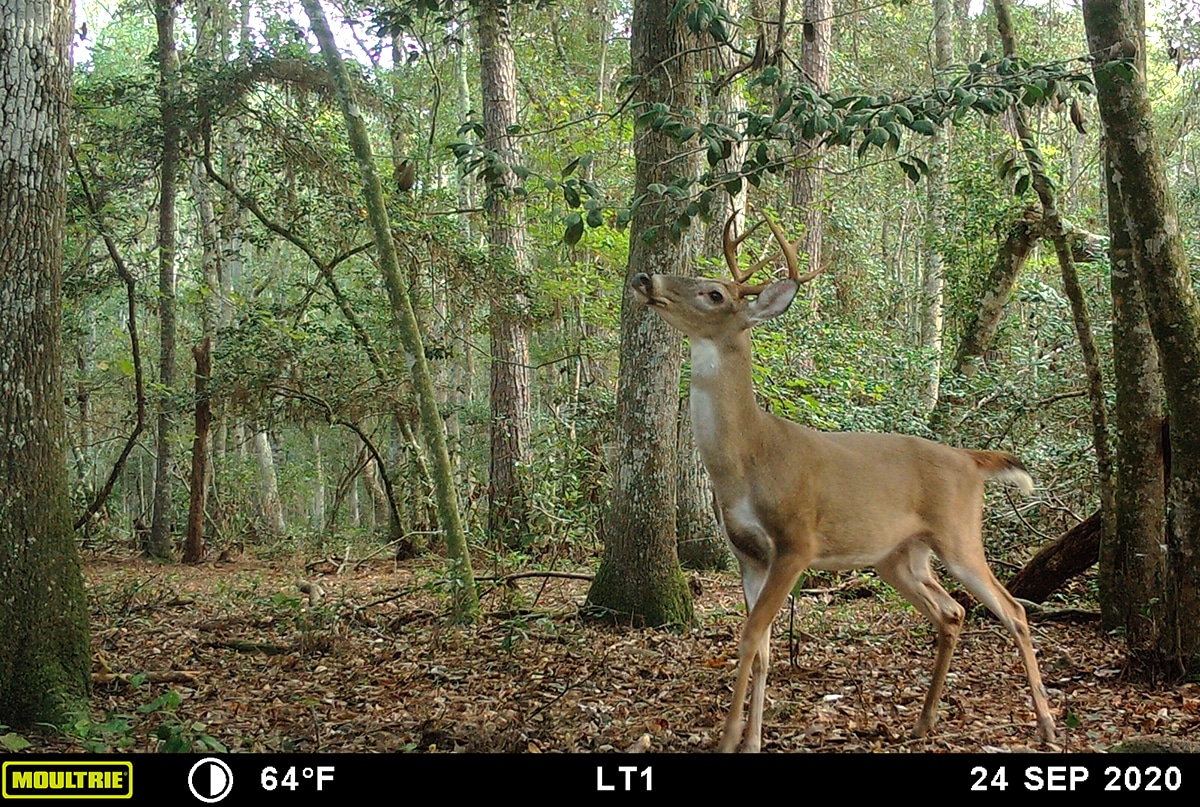
Regionally, whitetails can vary in color as well. Regional differences in deer are often most notably distinguished by size and body characteristics, but coloration is also a factor. If you look at the nearly 40 different sub-species of whitetails, you can often tell the difference between a deer from south Texas versus a deer from the Midwest, Canada, or even Florida based on these characteristics.
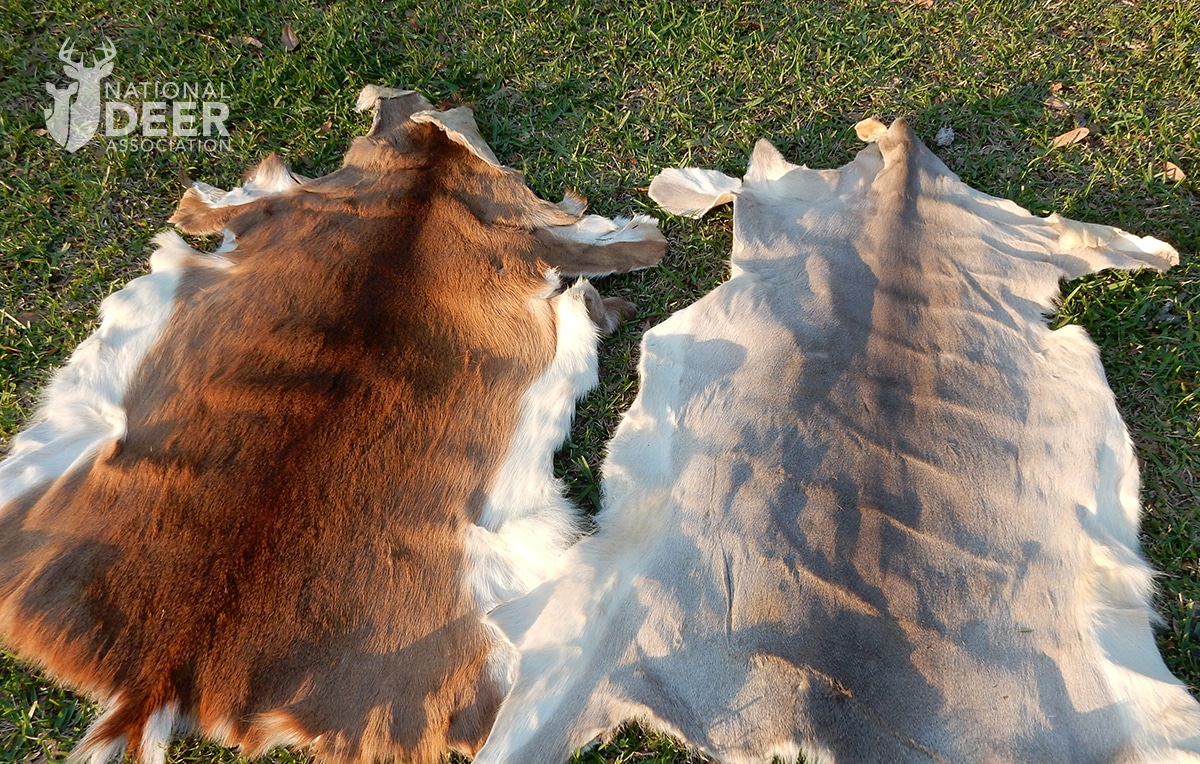
Herd Management Concerns
Hunters of free-roaming whitetails cannot change population genetics through harvest choices, so harvesting or passing a deer with one of these pigment conditions will have no measurable impact on the frequency of these traits. These conditions are rare and do not affect survival or health of the population.
Conclusion
Deer colorations have long mesmerized us. Getting to see one of the rare colored variations is an amazing treat, but getting to harvest one of these rarities can be taboo to some or an incredible feat for others. No matter your stance on the issue, just getting to witness the wide variety of deer colorations is a delight to us all.






![Air gun 101: The differences between .177 & .22 – Which jobs they do best ? [Infographic]](https://airgunmaniac.com/wp-content/uploads/2020/09/g44-218x150.jpg)








































